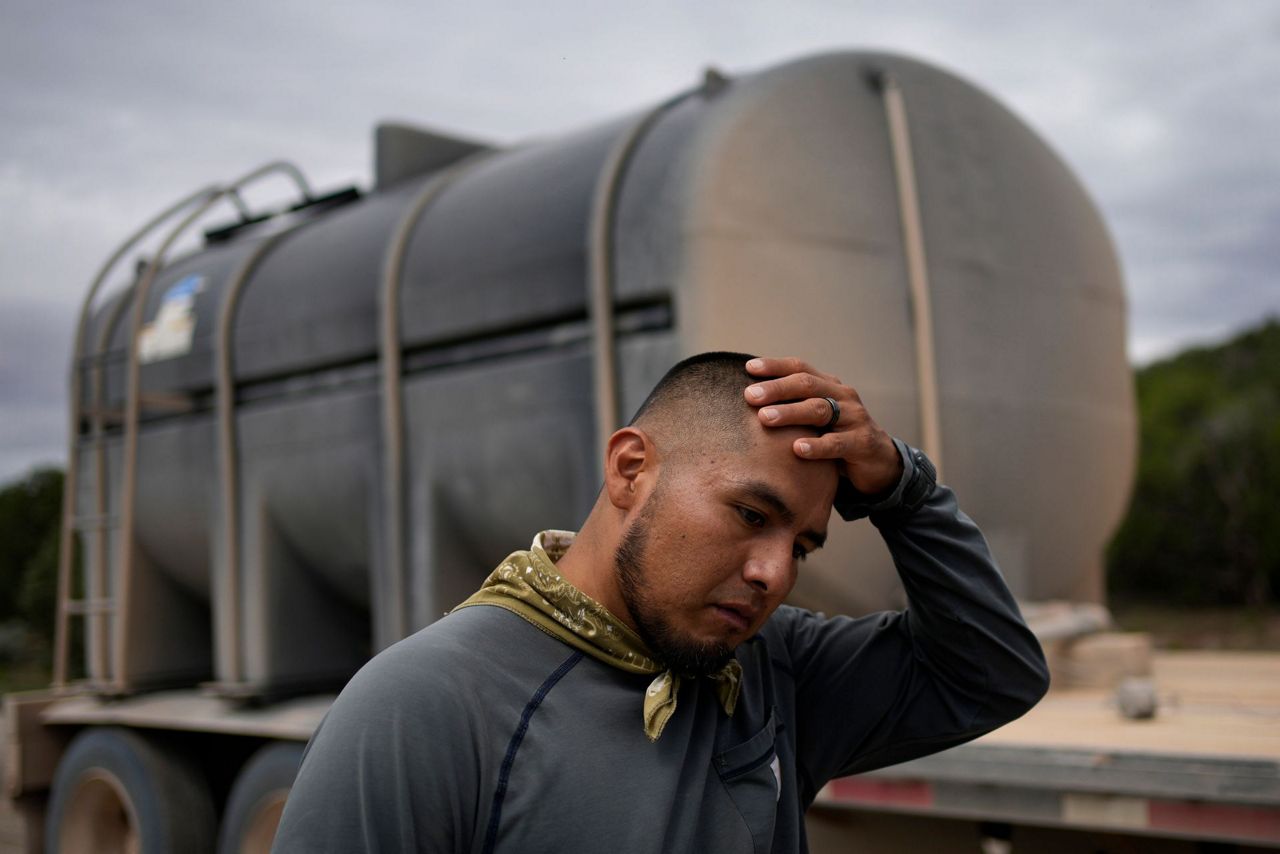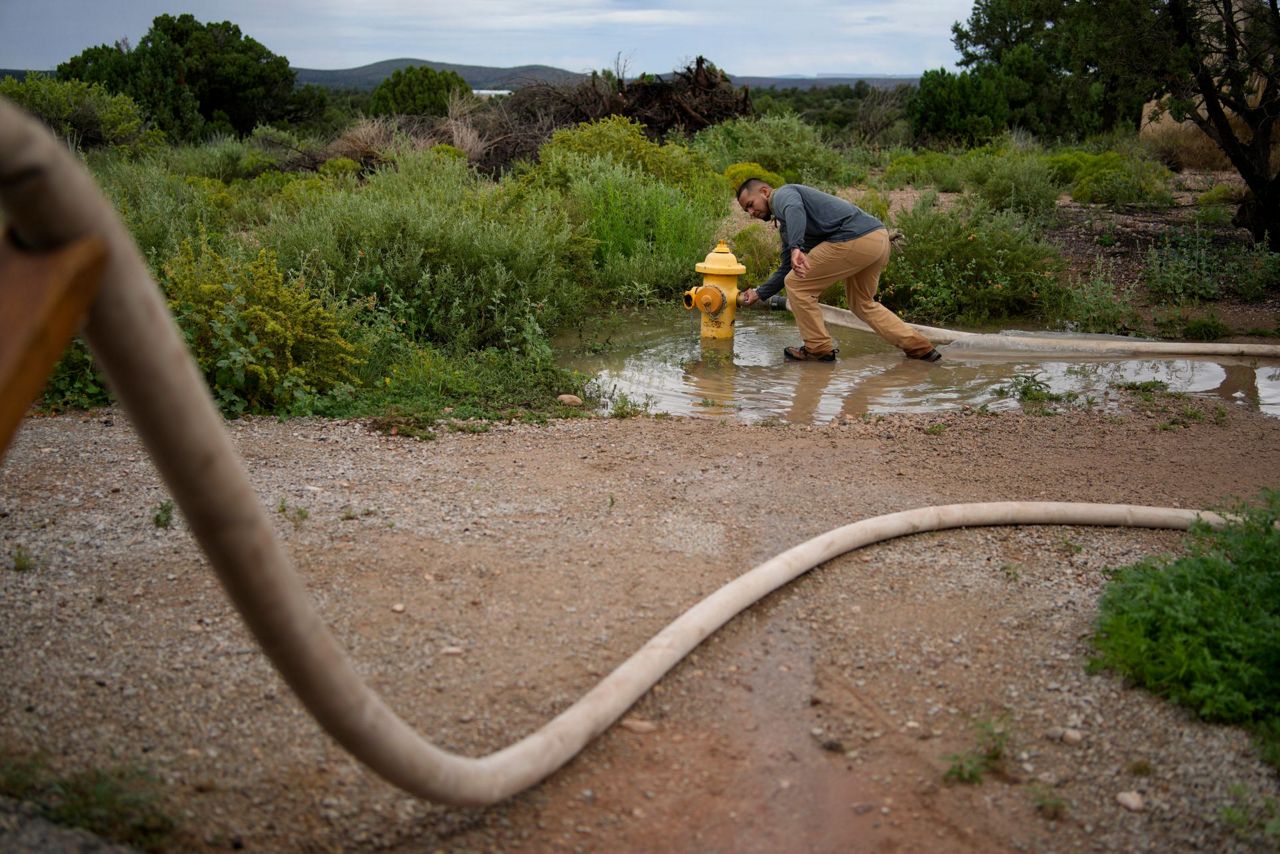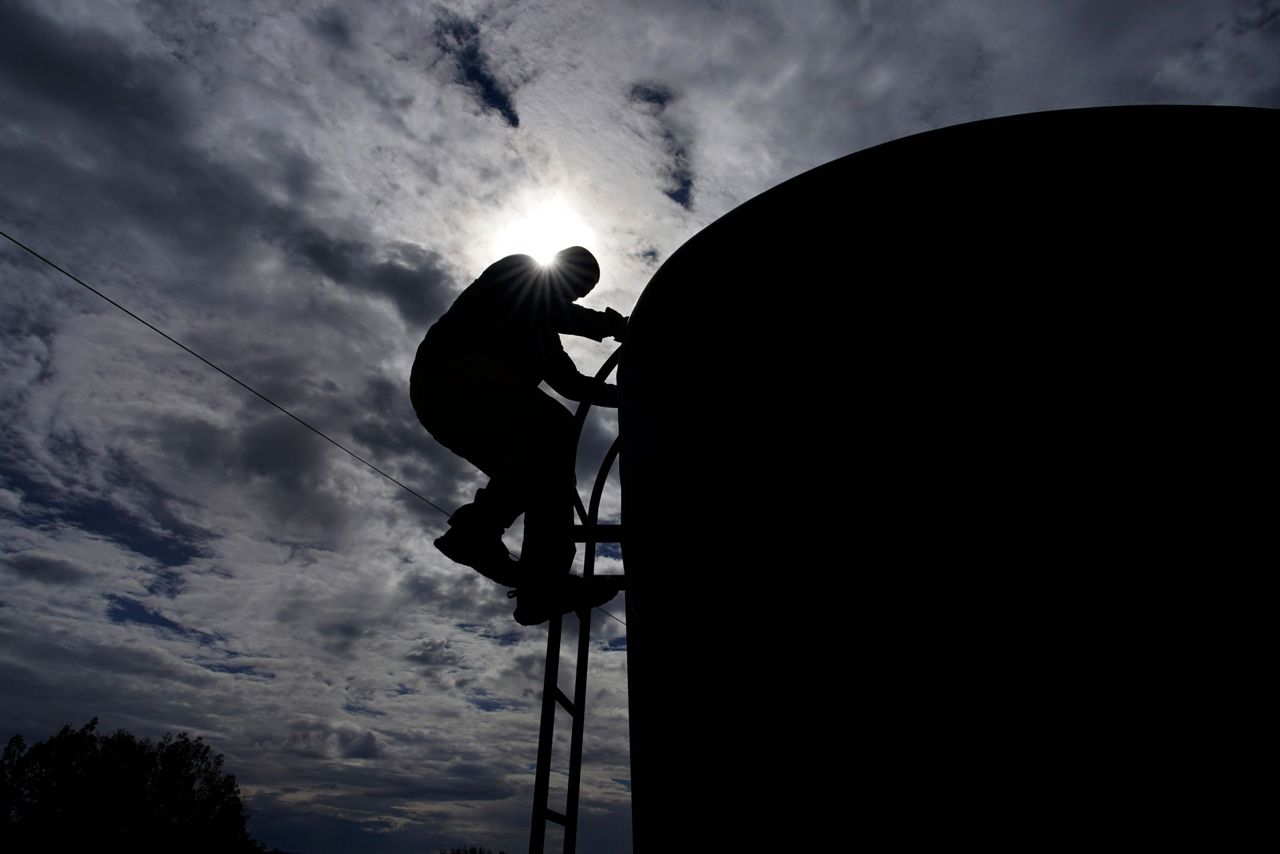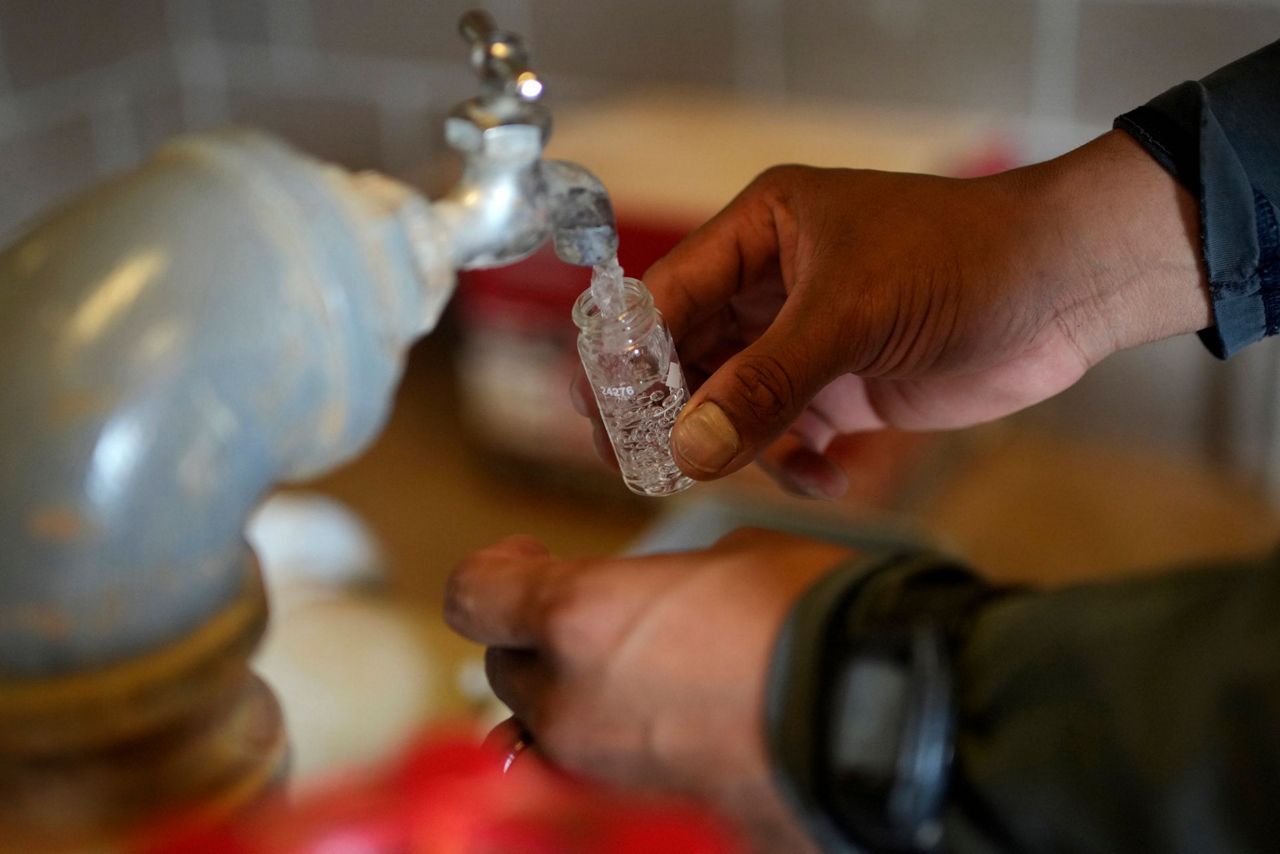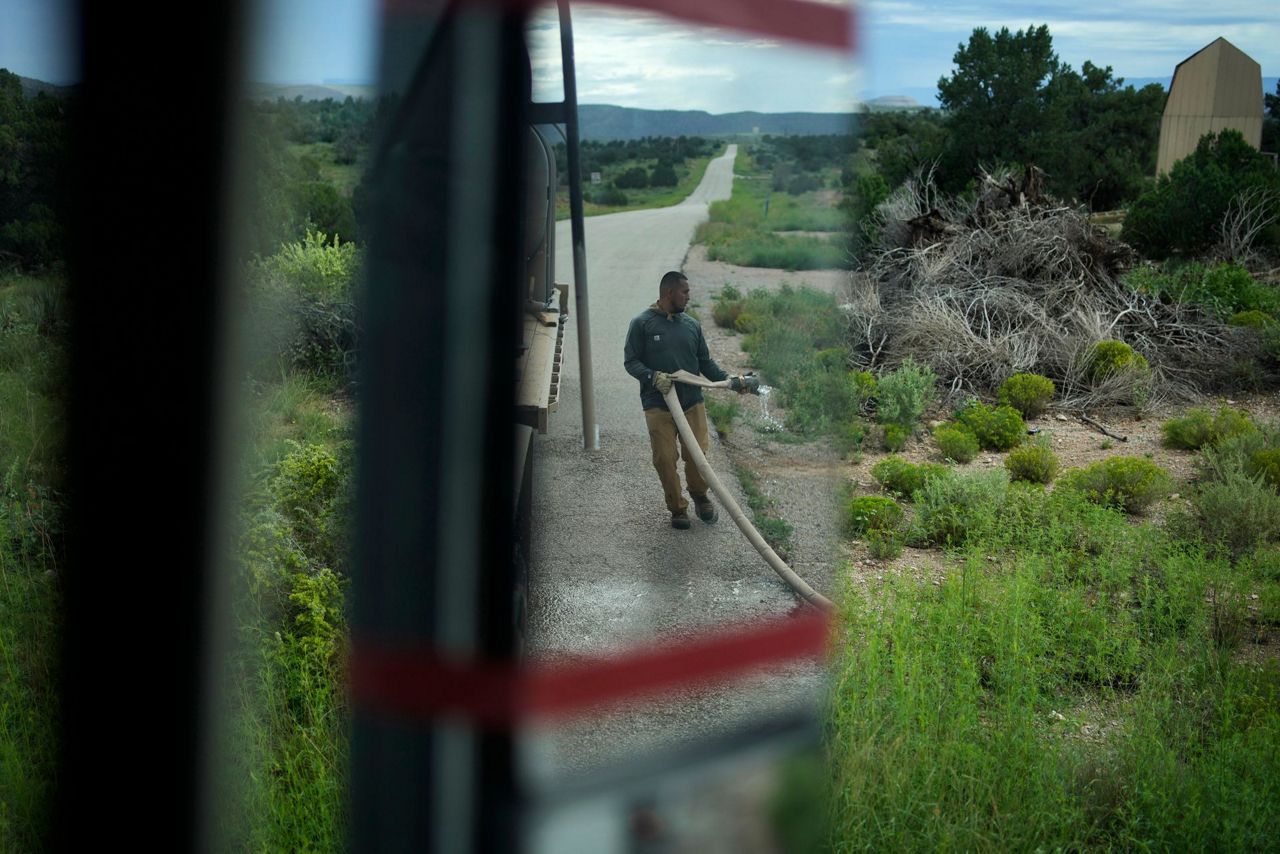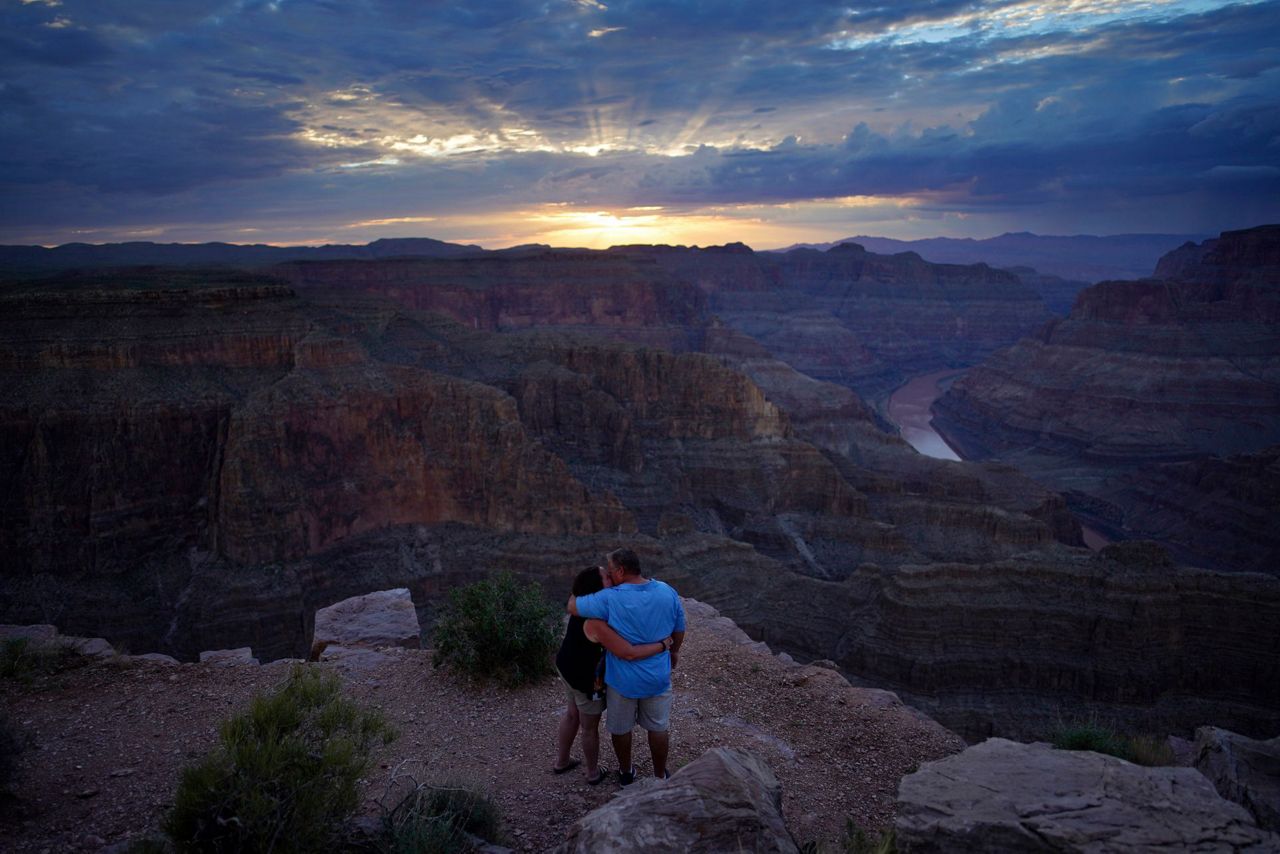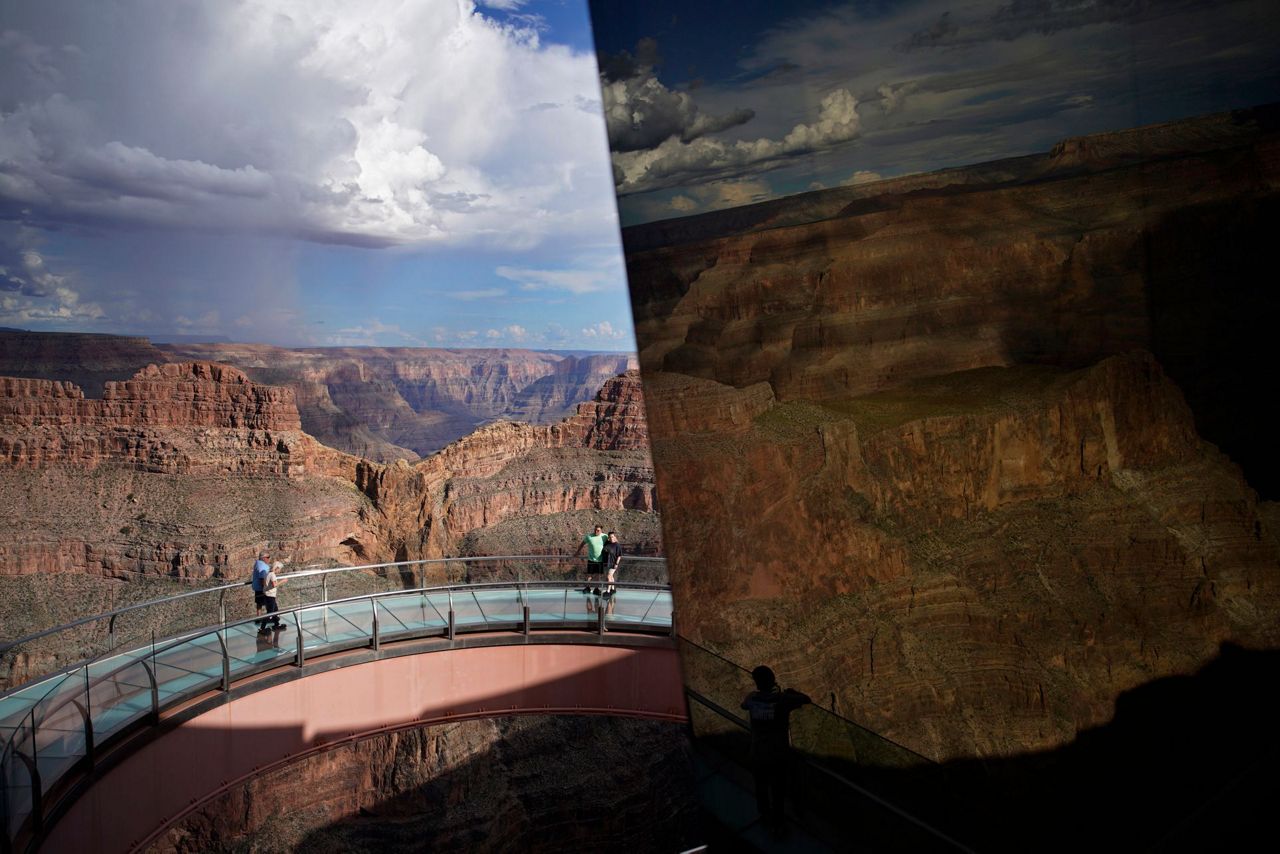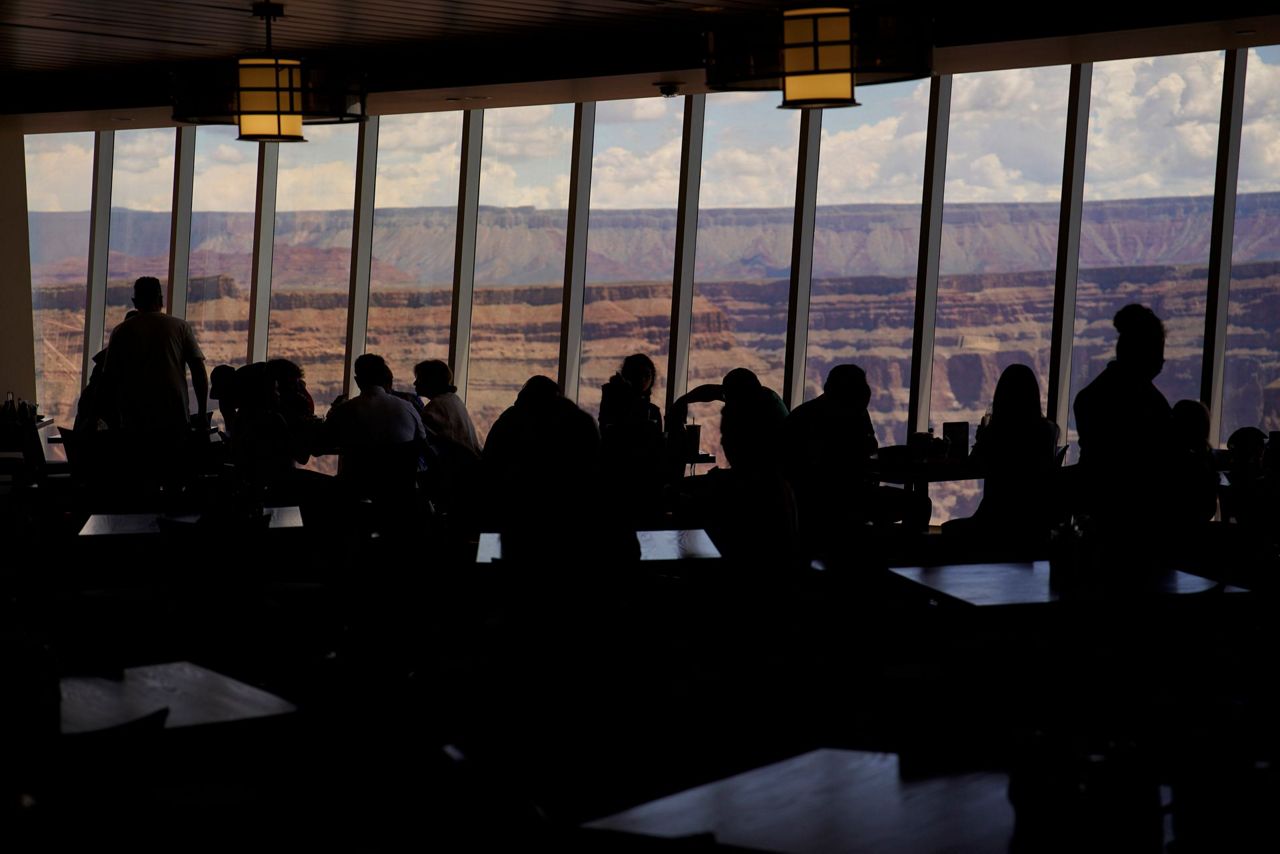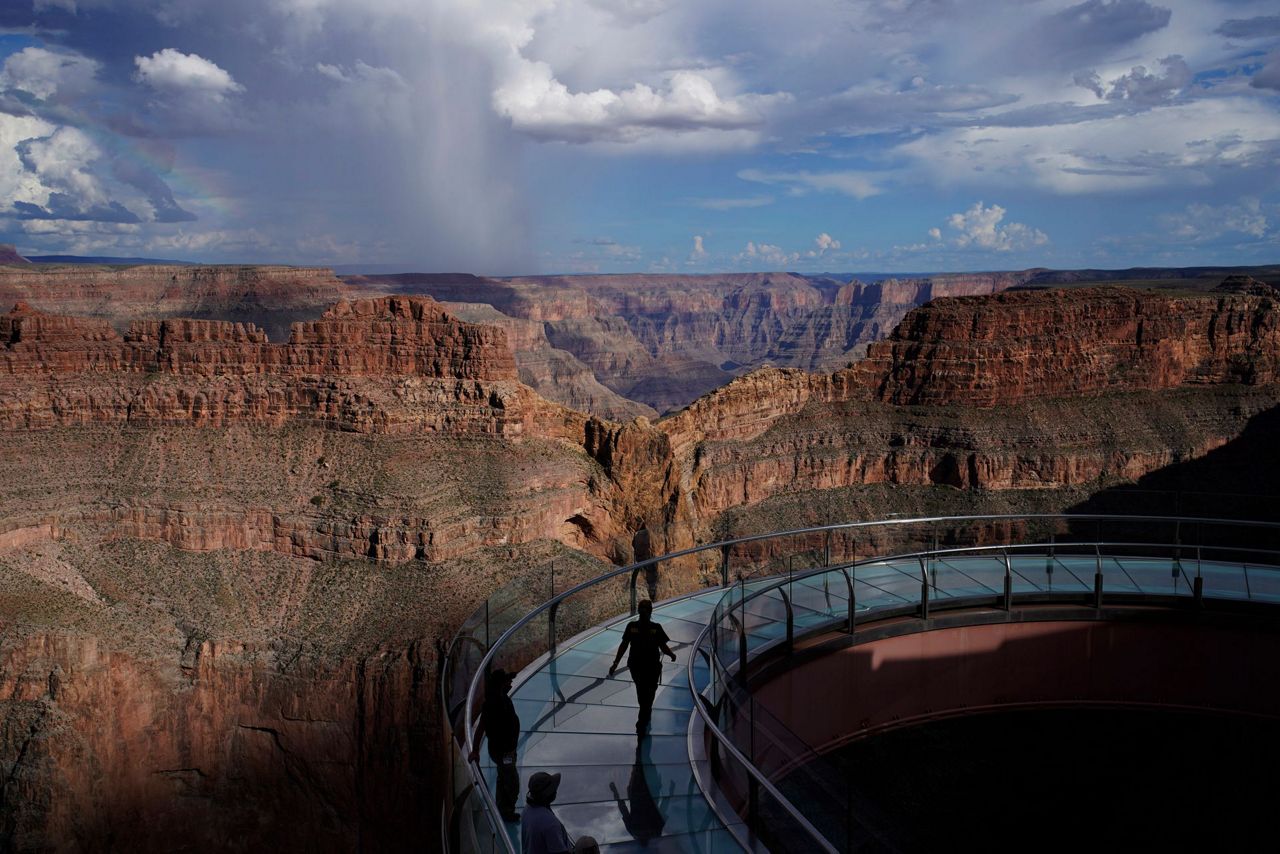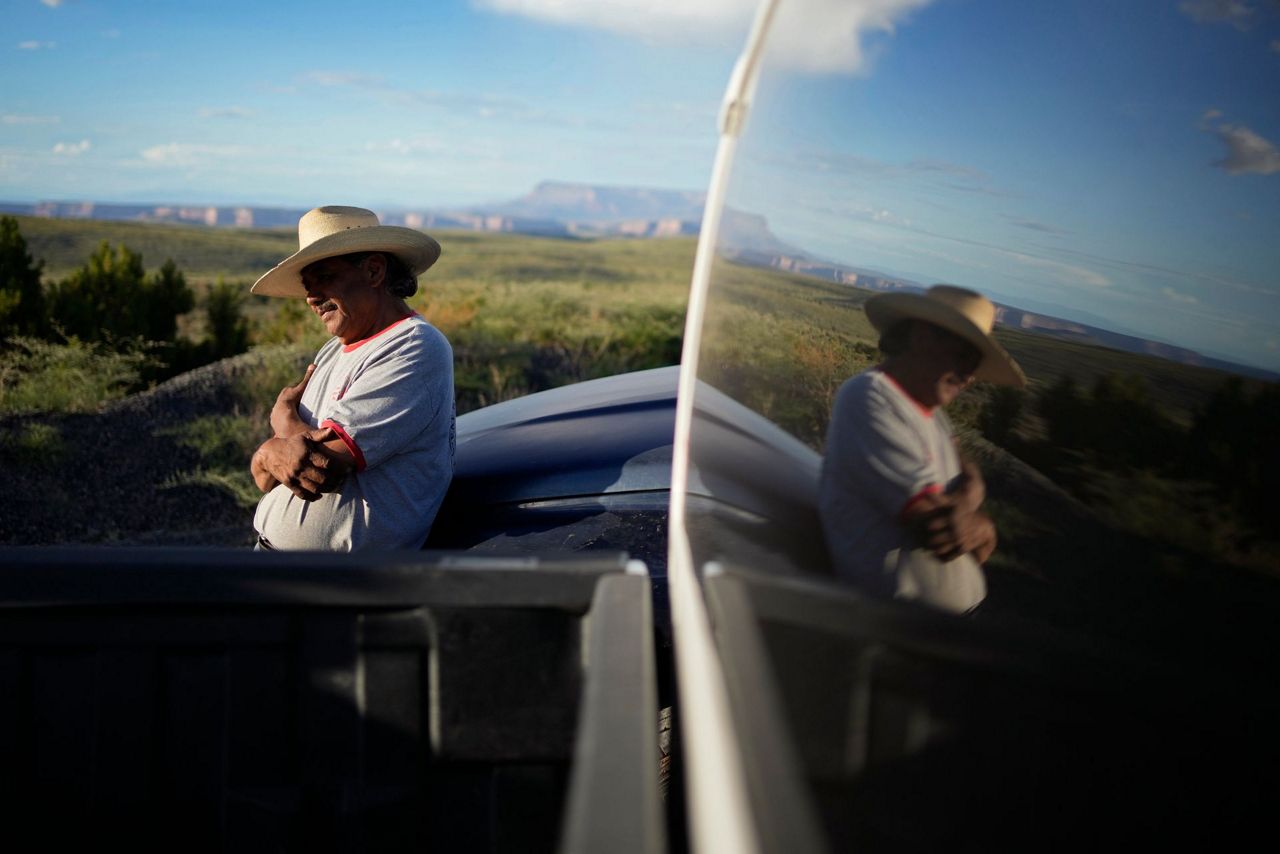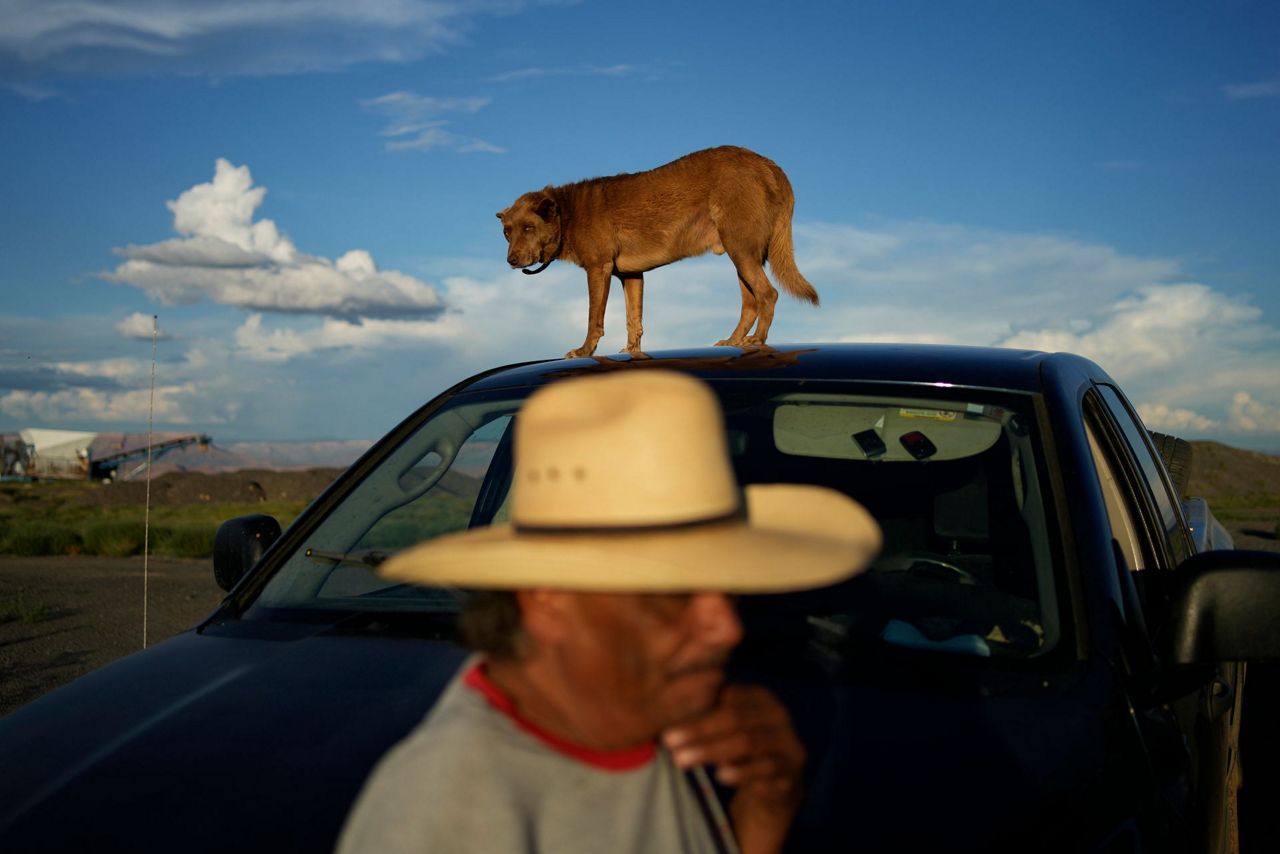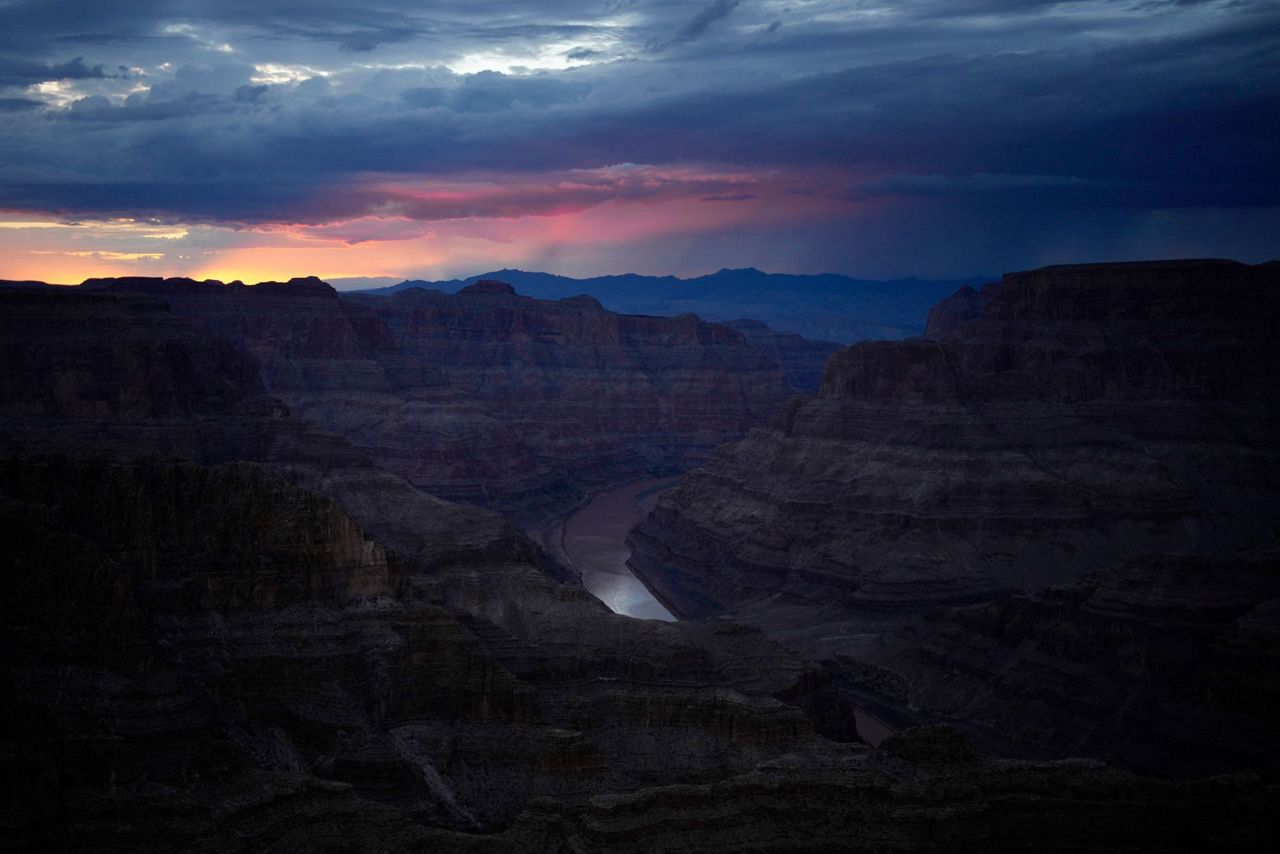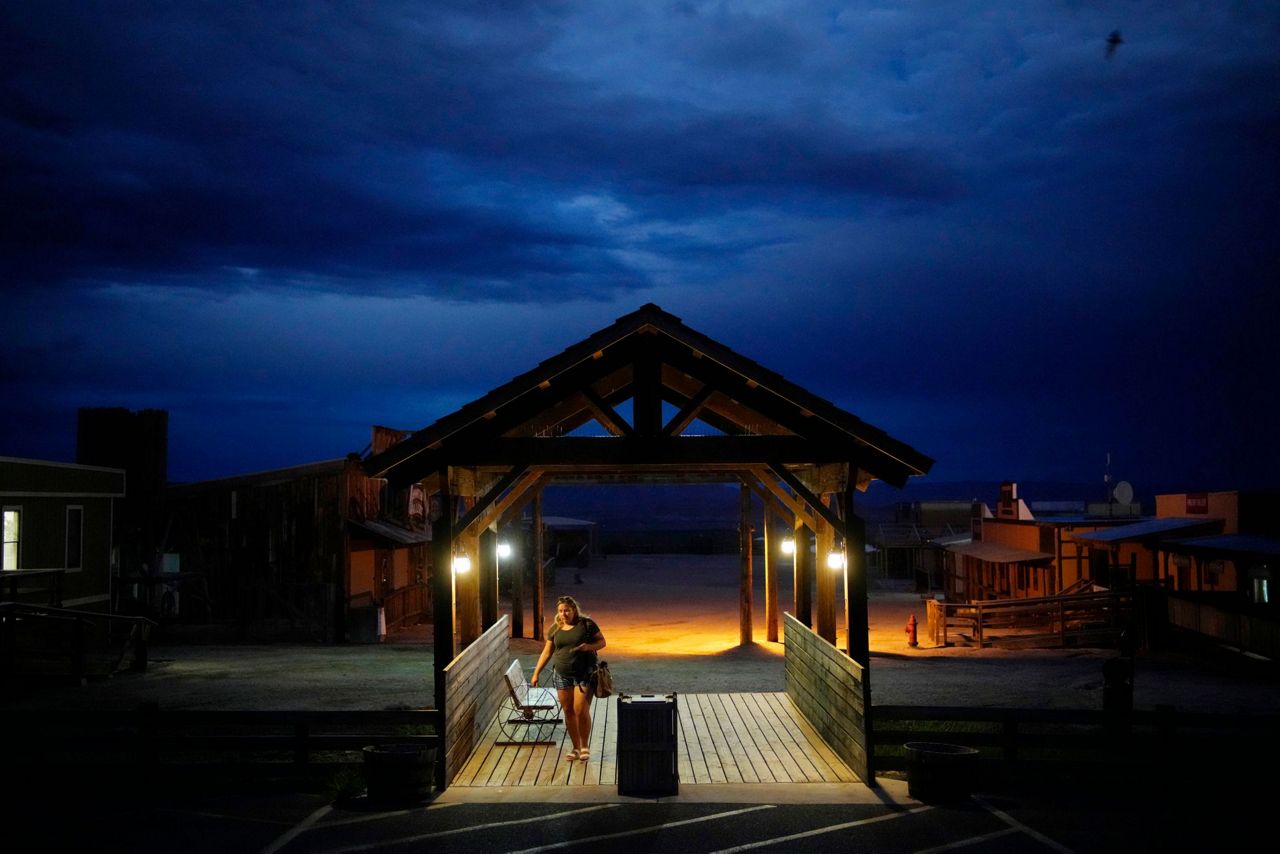Garnett Querta slips on his work gloves as he shifts the big rig he’s driving into park. Within seconds, he unrolls a fire hose and opens a hydrant, sending water flowing into one of the plastic tanks on the truck’s flat bed.
His timer is set for 5 minutes, 20 seconds — when the tank will be full and he’ll turn to the second one.
The water pulled from the ground here will be piped dozens of miles across rugged landscape to serve the roughly 700,000 tourists a year who visit the Grand Canyon on the Hualapai reservation in northwestern Arizona — an operation that’s the main source of revenue for the tribe.
Despite the Colorado River bordering more than 100 miles of Hualapai land in the canyon, the tribe cannot turn to it as a water source. About a dozen tribes across the Colorado River basin similarly have yet to fully secure access to the river. Now that the river is shrinking because of overuse, drought and human-caused climate change, tribes want the federal government to ensure their interests are protected.
___
EDITOR’S NOTE: This is part of a collaborative series on the Colorado River as the 100th anniversary of the historic Colorado River Compact approaches. The Associated Press, The Colorado Sun, The Albuquerque Journal, The Salt Lake Tribune, The Arizona Daily Star and The Nevada Independent are working together to explore the pressures on the river in 2022.
___
The Hualapai Tribe has a water settlement in Congress that comes with $180 million for infrastructure. Still, it could be years before a pipeline is built and water flows from the river to the main town of Peach Springs or the tribe's tourist center at Grand Canyon West.
“It was the best of a bad deal,” said Phil Wisely, the tribe’s public services director. “And the thing is, I don’t think we could get a better deal, especially now.”
The Colorado River no longer can support the 40 million people in the U.S. West who have relied on it, plus a $15 billion agriculture industry. The U.S. Bureau of Reclamation recently mandated deeper cuts to the water supply and asked seven states to find ways to conserve more.
Tribes did not get a share of the river when the states agreed to divide it and signed the Colorado River Compact in 1922.
Unlike other water users, tribes don’t lose access to water when they don’t use it. A 1908 U.S. Supreme Court decision known as the Winters Doctrine says tribes have the right to enough water to establish a permanent homeland. Often, tribes give up potentially huge water claims in exchange for an assured supply and federal funding to deliver it.
Tribal water rights — once they're fully resolved — could add up to about one-quarter of the river's historic flows, according to the Water & Tribes Initiative.
On the Ute Indian Tribe's reservation east of Salt Lake City, a water settlement has been delayed for decades because not everyone now agrees on the amount the tribe should receive.
Tribal leaders say they're tired of pressing the federal government to protect its interests. They maintain the way water has been apportioned in Utah has been unfair, though Utah state officials disagree.
“Until you start to deal with the inequities or the injustice, you can never really have any momentum going forward,” said Shaun Chapoose, chairman of the Ute Business Committee.
In a statement to The Associated Press, the Interior Department did not say how tribal water rights, which are federal rights, would be protected as the river’s flow decreases. It said it is working with tribes that are affected by drought.
Back on the Hualapai reservation, the tribe has been chasing groundwater for years.
Querta’s job is a grind, but he’s well-suited for it — analytical, quick and goal-oriented.
The truck takes a beating on the gravel and dirt road on multiple round trips of more than 30 miles most days. The side mirrors and back windows have rattled loose and are held on by red duct tape. Major truck repairs or illness can put him out of commission.
COVID-19 sidelined Querta for two weeks last year with no replacement.
“I didn’t mind because I didn’t want anybody to mess up my truck or my tanks,” said Querta. “I take care of this truck like it’s mine.”
The water he taps is sent through a pipeline just outside Peach Springs to Grand Canyon West. Revenue from tourism funds programs for the elderly, public works, the cultural center and other services. The main tourist attraction is the Grand Canyon Skywalk, a glass bridge with a view of the Colorado River 4,000 feet (1,219 meters) below.
A restaurant overlooking the canyon operates with water conservation in mind — waterless urinals, faucets with sensors, bottled water and food served in disposable containers. Those practices will remain even if Hualapai gets water from the Colorado River, said operations manager Alvaro Cobia-Ruesga.
The Hualapai Tribe has long planned to expand Grand Canyon West with a store, fire and police station, housing and elementary school to serve tribal members who now ride a shuttle up to five hours round trip daily from Peach Springs and surrounding communities to their jobs there.
But without a secure source of water for Grand Canyon West, it won’t happen, said tribal Chairman Damon Clarke.
“One of the biggest things with our settlement is hope for the future and getting this not for us at this time, but for the generations ahead,” Clarke said.
___
Fonseca covers Indigenous communities on the AP’s Race and Ethnicity team. Follow her on Twitter at http://twitter.com/FonsecaAP
Copyright 2022 The Associated Press. All rights reserved. This material may not be published, broadcast, rewritten or redistributed without permission.



